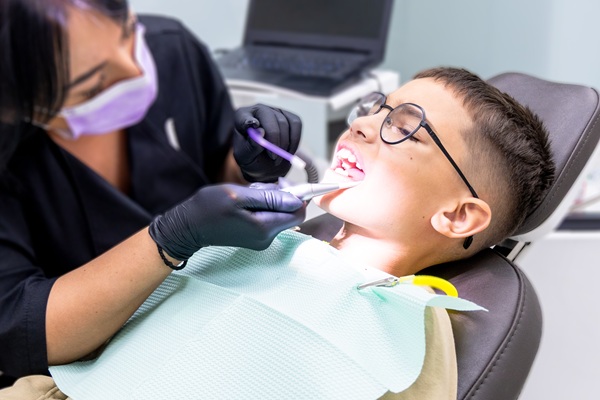An Overview of Phase Two Orthodontics

Phase Two orthodontics is the the second stage in comprehensive orthodontic treatment, typically following an initial intervention often referred to as Phase One orthodontics. The primary objective of Phase Two orthodontics involves perfecting alignment, correcting any remaining bite issues, and achieving optimal aesthetics and function once a patient has reached full adult dentition. Patients often undergo Phase Two orthodontics during adolescence (typically between ages 11 and 14), once most permanent teeth have emerged, allowing for precise and lasting orthodontic adjustments.
Goal of Phase Two orthodontics
The goal of Phase Two orthodontics focuses primarily on achieving a healthy, functional, and visually appealing smile. During this stage, Dr. Molly McMahon at Anchored Orthodontics will address any remaining misalignments or bite irregularities identified after completing Phase One treatment. Common objectives include correcting crowding, closing gaps, and aligning teeth precisely. Phase Two orthodontics also addresses more complex issues such as overbites, underbites, or open bites, ultimately aiming for an ideal dental occlusion and balanced facial appearance.
What treatment involves
Treatment during Phase Two orthodontics commonly includes either traditional braces or clear aligners to move teeth into their ideal positions. Braces, comprising metal or ceramic brackets connected by archwires, apply gentle pressure to guide teeth gradually into their desired alignment. Alternatively, clear aligners offer a discreet option consisting of custom-made trays worn sequentially to achieve the desired orthodontic results. The appliance choice depends on the patient’s specific orthodontic needs and preferences, with Anchored Orthodontics providing tailored guidance and recommendations for each patient’s needs and lifestyle.
Duration and follow-up care
The duration of Phase Two orthodontics generally ranges between 12 and 18 months, varying according to the complexity of the individual’s orthodontic requirements. While typical comprehensive orthodontics for someone who did not complete Phase One treatment may last 18 to 30 months, Phase Two orthodontics is generally quicker because many of the major bite discrepancies have already been addressed.
Regular visits to Anchored Orthodontics, typically every four to six weeks, allow careful monitoring and adjustments to ensure the treatment progresses effectively. During these appointments, Dr. McMahon evaluates tooth movement, the effectiveness of the appliance, and patient compliance. Consistent follow-up during Phase Two orthodontics ensures that treatment stays on track and any issues are promptly resolved.
Importance of compliance and oral hygiene
Effective results during Phase Two orthodontics, as well as with any form of orthodontics, rely on patient compliance. Maintaining diligent oral hygiene practices such as thorough brushing, flossing, and following dietary recommendations will enhance treatment outcomes. Additionally, patients must adhere to the instructions provided by Anchored Orthodontics, including wearing elastics or appliances as prescribed. Careful compliance ensures efficient treatment duration and minimizes the risk of complications.
Key recommendations during Phase Two orthodontics include regularly brushing and flossing after meals, along with dietary restrictions. These restrictions include avoiding sticky or hard foods that may damage braces.
Benefits of completing Phase Two orthodontics
Completing Phase Two orthodontics offers substantial lifelong benefits, including improved oral health, enhanced self-confidence, and a beautiful, aligned smile. Dr. McMahon states that the majority of patients who completed Phase One orthodontics would benefit from Phase Two orthodontics. But the second phase is generally much quicker, easier on the patient, and typically less expensive than if the patient did not undergo Phase One treatment.
Additionally, properly aligned teeth reduce tooth decay and gum disease risks, promoting better dental health and better overall health. Moreover, achieving correct dental alignment and an optimal bite supports long-term oral functionality and comfort, significantly improving the patient's overall quality of life and personal confidence.
Call our office to learn more about Phase Two orthodontics
Phase Two orthodontics represents an essential step toward achieving comprehensive orthodontic goals, delivering lasting aesthetic and functional improvements for patients. For more information or to schedule a consultation, call Anchored Orthodontics at (612) 200-0020.
Directly schedule or request a free consultation here: https://anchoredorthodontics.com or call Anchored Orthodontics at (612) 200-0020 for an appointment in our Minnetonka office.
Check out what others are saying about our services on Yelp: Phase Two Orthodontics in Minnetonka, MN.
Related Posts
Choosing between clear aligners and clear braces can feel overwhelming to some when exploring orthodontic care. While clear braces and aligners both straighten teeth and align bites, they differ in design, maintenance, and treatment scope. Understanding how each treatment option works will help patients make informed choices on their orthodontic care.Clear aligners are plastic trays…
There are several myths and misconceptions about orthodontics. This is the process of correcting teeth alignment issues using appliances like clear alignments and metal braces. Treatment with orthodontics sometimes also leads to improvements in a person’s facial structure and appearance.Misaligned teeth can ruin how a smile looks and can also increase the risk of issues…
Orthodontics typically involves wearing oral appliances like braces or clear aligners in order to straighten teeth. These devices work by constantly pushing on the wearer’s teeth, moving them to more desirable positions over time. Teeth misalignment can lead to a less aesthetically pleasing smile and a variety of oral issues, like gum disease. Getting appropriate…
Every person has unique reasons for seeking orthodontics. Some seek treatment to enhance the way that their smile looks, while others might want to address more serious issues, like not being able to speak properly due to teeth misalignment. Dentists often recommend orthodontics if they notice abnormalities like poor teeth alignment or a lack of…





